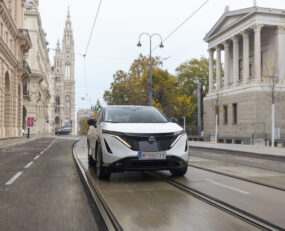
Assuming that the automotive supply chain will return to its pre-2020 profile is dangerous. Change is happening even faster than the vehicle manufacturers had planned for.
Nissan for example has just been discussing the future of its supply chain architecture as part of what it calls its “Ambition 2030”. This outlines what the Nissan product line-up will look like.
The latest announcement is that “Nissan will increase the number of models to meet the growing needs of customers for exciting and diverse electrified vehicles, introducing 27 new electrified models, including 19 new EVs, by fiscal year 2030. As a result, the electrification mix across the Nissan and INFINITI brands by 2030 is projected to increase to more than 55% globally, up from the previous forecast of 50%.” For Europe the figure is even higher with 98% of vehicles to be electric vehicles (EV).
In discussions with journalists, Ashwani Gupta, Nissan’s Chief Operating Officer commented that these ambitions meant that the company would need to augment its existing production EV production at the plant in Smyrna, Tennessee with new capacity to build electric drive-trains at the neighbouring plant at Decherd.
Nissan is also looking for a second battery plant to complement its existing supplier Envision AESC, which also has a battery production facility in Smyrna. This might be the new plant that Envision AESC is building in South Carolina partly designed to serve BMW production at Spartanburg. Part of the logic behind these announcements as they affect the US is to manage the impact of the Inflation Reduction Act. This is designed to force companies such as Nissan to build both whole vehicles and components in the US rather than importing them.
What this example from Nissan illustrates is that the EV supply chain is being conceived of by large vehicle manufacturers within a similar architectural concept as the internal combustion supply chain, with the power-train production capacity neighbouring the assembly facility. Presumably this means that the types of logistics services that Nissan will require will not be too different either, with capabilities such sequencing and line-feed co-ordinating the flow of components into and around the assembly plant. Major components will be moved from the suppliers by road freight. The EV supply chain also looks remarkably local. How sustainable? This is a good question.
Author: Thomas Cullen
Source: Ti Insights
Supply chain strategists can use GSCi – Ti’s online data platform – to identify opportunities for growth, support strategic decisions, help them stay abreast of industry trends and development, as well as understand future impacts on the industry.
Visit GSCI subscription to sign up today or contact: Michael Clover for a free demonstration: [email protected] | +44 (0) 1666 519907